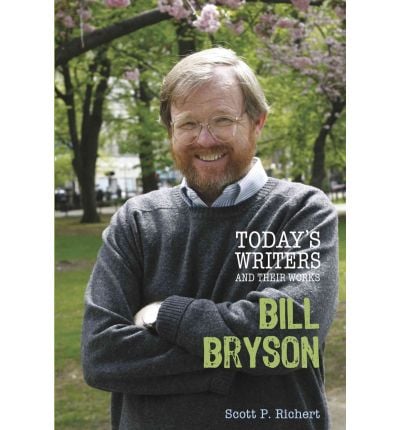With this book, Chronicles’ capable executive editor contributes to a series for teenagers—seventh grade and older, says the publisher’s website—on successful contemporary writers who have some literary cachet. Since his style in the book is as limpid and straightforward as that of his monthly column, The Rockford Files, it seems that at least one children’s publisher still believes there are American adolescents capable of reading and absorbing expository prose that is not dumbed down for them. At any rate, this little book emits not a whiff of condescension.
Bill Bryson is the odd man in the series: Whereas the other four subjects of the initial batch of titles are novelists, he has made his mark with nonfiction—travel accounts, books on the English language, nontechnical popular science, an autobiography concerned more with his place and time than with his life, a biography of Shakespeare that is more about the writing of Shakespeare biographies than about Shakespeare’s life, and a very recent book about domestic life. Bryson’s most salient quality is his humor, which ranges from sarcasm to wordplay but doesn’t seem to traffic much in zippy one-liners, else Richert might cite a few of them. Despite plenty of quotation from Bryson’s writings, Richert tells rather than shows us that Bryson’s funny. That is no fault in a book intended to interest its readers in an author, especially when such readers lack the experience and are just developing the mental flexibility to appreciate much humor. They’ll learn humor from reading, and better that than from TV and the movies.
The 84 pages of text comprise three chapters, one each on the life, the times, and the works of the subject. The Iowa-born Bryson exerts Midwestern boyish appeal from the get-go, a quality that Richert convinces us makes his memoir, The Life and Times of the Thunderbolt Kid (2006), so winning. Richert has immediately to draw attention to the fact that Middle American Bryson has spent most of his adult life in Britain and is at present seeking citizenship there (a lengthy process). Hence, Americans regard Bryson as an expatriate writing from Britain, while the British see him as an American-born British writer.
Despite that mirror-image status, Bryson, though professing to be a liberal from the cradle, has developed an earnest respect for the integrity of towns and locales. In A Walk in the Woods (1998), his biggest American success, he bemoaned the artificiality of the Appalachian Trail, even while noting its beauties. (European hiking trails tend to wend through towns and farmlands rather than prissily avoiding them.) In 2003 he accepted an appointment as a commissioner of English Heritage, and in 2007 he became president of the Campaign to Protect Rural England. His sympathies are for what has developed largely unintentionally—organically, some conservatives would say, though by that they (and he) would not mean “without human participation.” So perhaps his English literary forefather is that witty preservationist laureate, John Betjeman. (Do any American conservationists/preservationists have a sense of humor—besides Bryson, that is?)
Bryson is a baby boomer, whose life and work have been shaped by the social and economic developments of the latter half of the 20th century, which occupy the middle chapter here: American optimism (on top of American exceptionalism), population shifts from farm to city and from city to suburb, the burgeoning female presence in the workforce, the consumer-credit system, interstate highways, chain stores, urban renewal, inflation, and the corporate state. Cannily relating these to Bryson’s life and writing, Richert makes the best of this section of the book, creating a précis good for students and teachers alike; good enough, in fact, to be suited for home, as well as classroom, use.
All the back matter that should be in a scholarly author study—list of works, biographical chronology, reference notes, bibliography, and index—are here and well done. And, this being what Library of Congress cataloging calls juvenile literature, there are plenty of pictures, most of them relevant.
[Bill Bryson, by Scott P. Richert (New York: Marshall Cavendish Benchmark) 127 pp., $42.79]

Leave a Reply